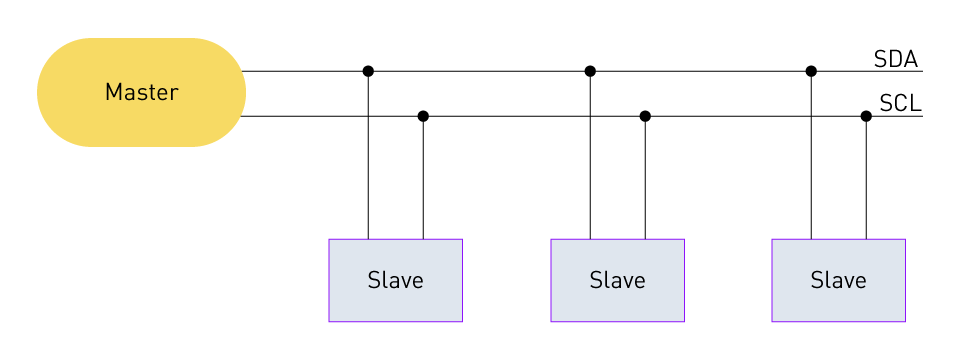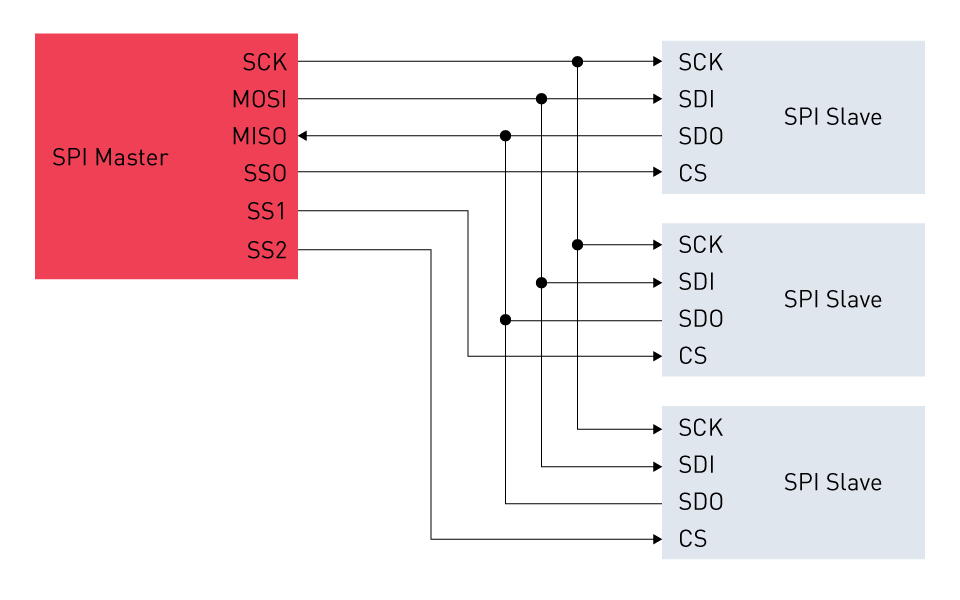Sensor-Microcontroller Interfacing
When designing a sensor system, it is essential to establish effective communication between the sensor and the microcontroller, which interprets and processes the sensor data. A well-designed interface ensures the accurate and efficient transmission of data, allowing the microcontroller to make informed decisions or relay information to other systems or networks.
Digital and Analog Interfaces
Analog Interfaces: Analog interfaces are fundamental when the sensor outputs a continuous range of values, typically voltage levels. Analog-to-digital converters (ADCs) are employed to translate these continuous signals into discrete digital values that can be processed by microcontrollers. Precision, sampling rate, and noise susceptibility are critical factors to consider in analog interfacing, influencing the accuracy and reliability of the data acquisition process.
Digital Interfaces: Digital interfaces are advantageous when dealing with discrete signal values, allowing for more straightforward and robust communication with microcontrollers. They generally exhibit higher immunity to noise and disturbances, facilitating reliable data transmission. Logic level, voltage compatibility, and signal timing are crucial aspects to address in designing digital interfaces to avoid misinterpretations and ensure coherent communication.
Communication Protocols
The chosen communication protocol serves as the structured method for exchanging information between the sensor and microcontroller, dictating how data is formatted, transmitted, and verified.
Inter-Integrated Circuit (I2C): I2C is a widely adopted, synchronous, multi-master/multi-slave, packet-switched, single-ended, serial communication bus. It is advantageous for its simplicity, requiring only two bidirectional open-drain lines (SDA for data and SCL for clock), and its support for multiple devices on the same bus. Its scalability and flexibility make it suitable for various applications, from simple connections to complex networks, but it may be less optimal for high-speed or long-distance communications due to its susceptibility to signal degradation.

Figure 1: I2C wire layout
Serial Peripheral Interface (SPI): SPI is another prevalent synchronous serial communication protocol, known for its speed and efficiency. It operates in a master-slave configuration, utilizing four lines: MISO (Master In Slave Out), MOSI (Master Out Slave In), SCLK (Serial Clock), and SS (Slave Select). SPI’s full-duplex communication enables simultaneous transmission and reception of data, optimizing data exchange rates. However, its requirement for multiple lines and individual slave select lines for each connected device can pose challenges in applications with limited available pins or numerous interconnected devices.

Figure 2: SPI wire layout
Sensor-microcontroller interfacing is pivotal to the functionality of sensor systems. The selection between analog and digital interfaces depends on the nature of the sensor signals and the desired communication reliability. Choosing the appropriate communication protocol, like I2C or SPI, is determined by the application requirements, system complexity, and available resources. A meticulous approach to interfacing design is imperative to guarantee accurate, efficient, and reliable data exchange between sensors and microcontrollers, laying the foundation for informed processing and decision-making in diverse applications.
SDI-12 (Serial Digital Interface at 1200 baud): SDI-12, a standard digital communication protocol, is particularly prominent in environmental data acquisition systems, such as those used in hydrology and meteorology. It is designed for interfacing with microcontrollers and sensors that monitor environmental conditions. Characterized by its low-power consumption and simplicity, SDI-12 allows multiple sensors to share a single data line, thus reducing the wiring complexity for sensor arrays. This protocol operates at 1200 baud, a rate that balances efficient data transmission with minimal power usage, making it ideal for battery-powered or remote sensing applications. SDI-12 supports a single master (often a data logger or microcontroller) and multiple sensors (up to 62) on the same three-wire bus, enabling efficient communication in large sensor networks. The protocol's resilience to electrical noise and capability to transmit over long cable lengths without significant signal degradation are additional benefits that make it a preferred choice in field applications.
Signal Integrity
Signal integrity concerns the preservation of the waveform's information content as it propagates from a transmitter to a receiver. In the context of sensor interfacing, it is crucial for ensuring that data derived from sensors is both accurate and consistent, especially when used for critical decision-making processes or systems monitoring. Given the inherent susceptibility of signals to various sources of noise and interference, the challenge of maintaining signal integrity is paramount.
Dealing with Noise
Noise in sensor interfaces can arise from a variety of sources. These may include thermal noise, electromagnetic interference (EMI), and crosstalk from neighboring channels, among others. Some strategies to mitigate these noise sources include:
Shielding: Using shielded cables or enclosures can significantly reduce the influence of external EMI, which can be especially prevalent in industrial environments or near other electronic devices.
Filtering: Implementing low-pass or band-pass filters can help eliminate frequencies that are outside the relevant range for the sensed phenomenon, effectively reducing noise.
Differential Signaling: This method utilizes two complementary signal lines. The receiver reconstructs the signal by taking the difference between these lines, which improves noise immunity since common-mode noises tend to affect both lines equally and are eliminated upon differencing.
Grounding: Proper grounding techniques can significantly minimize ground loops, which are a common source of noise in analog systems.
Ensuring Signal Quality
Maintaining signal quality goes beyond merely reducing noise. The following measures can help ensure optimal signal quality:
Proper Sampling: Adhering to the Nyquist-Shannon sampling theorem, which dictates that a signal must be sampled at least twice the highest frequency present, is essential to prevent aliasing and to accurately reconstruct the original signal.
Impedance Matching: Ensuring that the impedance of the sensor output matches that of the input to which it's connected can minimize reflections and maximize power transfer, thus preserving signal integrity.
Use of Repeaters/Amplifiers: For long-distance transmissions or weak signal outputs from sensors, using repeaters or amplifiers can help maintain the signal strength and quality over the transmission distance.
Error Checking: Techniques like parity checks and cyclic redundancy checks (CRC) can be employed, especially in digital communication, to identify and potentially correct errors during data transmission.
Signal integrity is a cornerstone of reliable sensor interfacing. It's not merely about having a functioning system but ensuring that the system performs optimally under various conditions. Through a combination of noise-reduction strategies and techniques that bolster signal quality, engineers can design sensor interfaces that provide consistent, high-quality data, forming the backbone for reliable and informed decision-making in applications ranging from industrial automation to health monitoring.
Sensor Networks and Communication
In today's interconnected world, individual sensors often do not operate in isolation. Instead, they are part of larger networks, working in tandem to provide a holistic view of an environment or system. These networks, known as sensor networks, are pivotal in applications ranging from environmental monitoring to smart city infrastructure.
Basics of Sensor Networks
Definition: A sensor network is a group of spatially distributed sensors that collaborate to monitor physical or environmental conditions, such as temperature, sound, or pressure, and organize the collected data at a central location.
Nodes: Each sensor in the network acts as a node, often equipped with data processing and communication capabilities alongside sensing components.
Data Aggregation: Many sensor networks employ data aggregation techniques where raw data from multiple sensors is combined and processed locally before being sent to a central server or base station. This helps in conserving bandwidth and improving network efficiency.
Communication Challenges
Sensor networks, while versatile, are not devoid of challenges, particularly in the realm of communication:
Power Constraints: Many sensor nodes operate on battery power. Efficient communication protocols are essential to maximize battery life.
Bandwidth: Given the potentially large number of sensors in a network, managing bandwidth to ensure timely data transmission can be complex.
Interference: Especially in wireless networks, sensors might face interference from other devices or even other sensors, leading to potential data loss.
Scalability: As the need for data grows, a sensor network might need to expand. The network must be robust enough to handle this growth without a drop in performance.
Security: Data integrity and protection are paramount. Networks need to be secure against potential threats, from data interception to malicious attacks.
Topologies
The way sensors are organized and communicate with each other in a network is governed by its topology. Some common topologies include:
Star Topology: Each sensor (or node) communicates directly with a central node. It's simple but can be bandwidth-intensive for the central node.
Mesh Topology: Sensors are interconnected, and data can take several paths to reach its destination. It offers redundancy but is more complex to set up and manage.
Tree Topology: A hierarchical structure where some sensors act as leaders or aggregators for subsets of other sensors.
Cluster-Based Topology: Nodes are grouped into clusters, with one node acting as the cluster head, aggregating and forwarding the data.

Figure 3: Sensor network topologies
Sensor networks and their communication protocols form the backbone of many modern sensing applications. By understanding the basic principles of these networks and the challenges they face, engineers can design robust, efficient, and scalable systems that leverage the power of multiple sensors to derive insights from vast swaths of data. As technology advances, the role of sensor networks will only become more prominent, underscoring the need for continued research and development in this area.




直接登录
创建新帐号